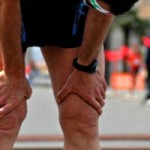Never mind the physical pain of the injury, the psychic pain of not being able to run can sometimes be even worse. Force yourself to tough it out. It’s very important to come back slowly from an injury, and you shouldn’t rush the process. Cut way back on running – or eliminate it entirely – until you recover from your injury.
Plan your Injury Comeback
Your body, unfortunately, is a fickle creature. After all the time and energy and kilometres you have invested to get it into shape, your body will thank you by forgetting it all at the earliest opportunity. It’s a difficult truth: you lose fitness quickly when you stop all training. You can, however, take up to a week off without losing any ground. Three or four days of rest can even improve your performance. But after a week, you will quickly start to lose your edge — a lot faster than it took you to build it up. You can lose about half your aerobic fitness in just two or three weeks.
This “detraining” effect can be minimized or even eliminated with cross-training. Find an activity that will not put added strain on your injury and keep at it to maintain fitness. Biking, swimming and pool running are good aerobic exercises to get you off your feet but keep you in shape. You will still lose some fitness, since these activities don’t work your main running muscles nearly to the degree that running would. Water running — strapping on a flotation belt and running in place in water – is perhaps the best cross-training activity for maintaining running ability during a comeback.
After a long layoff, even with cross training, you’re bound to lose at least some fitness. A general rule of thumb is that it takes about two weeks of “retraining” to come back from every week in which you do no exercise. Go easy on yourself during this period. Don’t let your ego convince you that you should immediately try to run as you did before your injury. You risk bringing the injury right back. If you’ve been off the roads for only a week or two, start at about half the distance you were running before the injury. You should be able to build back to your former level in two to four weeks.
If you have had an extended layoff, however, you should be very conservative. Treat yourself like a new runner. Alternate running and walking in your workouts and take a day off after every running day. Never fear, you’ll find that you will get back into the groove faster than it took you to get into it when you first started. But don’t push it. Your heart and lungs probably won’t have much trouble keeping up, but it may surprise you how tired your muscles and bones feel. Don’t strain or injure them in your rush to return to your previous fitness.
This does not necessarily mean running slower — just less. Turns out that jogging slowly might actually aggravate your injury; better to run a normal pace and throw in walking breaks for the same amount that you run. As you progress, of course, you can extend the amount of time that you run and reduce the walking time. For your weekly mileage, think in terms of plateaus. As you build back to your previous level, pause for a few weeks at intermediate mileage levels along the way to regain strength and confidence. If you were running 50km before your injury, stop at 25km per week to get comfortable with that amount, then build up to 35 or 40 km and establish a strong base there before heading back on to 50 km per week.
Just remember to keep that ego in check. Adjust your goals and expectations so that you don’t get frustrated and injure yourself again. Think of your time off as an opportunity to explore other exercise activities. Enjoy your rest; it’s actually good for you.
View the articles under the Injury and Treatment section:
- To reduce injury risk, you need to minimise impact
- Injury Treatment Approaches
- Leg & Foot Cramps
- Water Running
- The Gift of an Injury
- Injury prevention tips
- The best predictors of injury
- The Comeback from Injury
View: Injury guide – Sites of the Most Common Running Injuries






























Trackbacks/Pingbacks